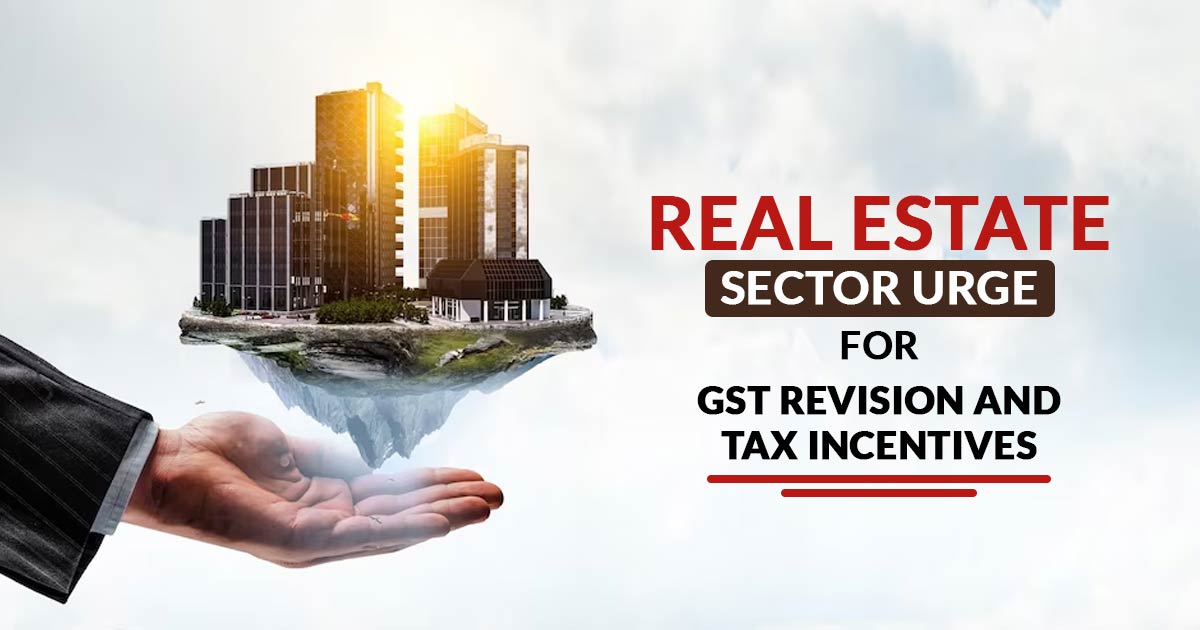
As India awaits Finance Minister Nirmala Sitharaman’s 6th Union Budget, to be presented in Parliament dated February 1, 2024, the nation’s real estate sector, certainly for the affordable housing segment, is poised in expectation. To realize the vision of the government for ‘Housing for All,’ experts and industry leaders have shared their thoughts asking for important measures to increase the affordable housing landscape.
Revisiting GST rates, tax deductions, land allocation, and fund boosts are the proposals included. The forthcoming budget is noticed as a chance to fortify the real estate industry’s key role in the economic development of India.
According to a recent report, there has been a significant improvement in the EMI-to-income ratio for households in major Indian cities since 2019. The trend continued to better itself in 2023 compared to the preceding year. This positive shift indicates a decrease in the proportion of monthly income allocated to mortgage payments, making homeownership a more feasible prospect for a larger segment of the population, as per the research findings.
What Says by an Expert?
The National Real Estate Development Council (NAREDCO) has proposed to the finance ministry the establishment of the second instalment of the Special Window for Affordable and Mid-Income Housing (SWAMIH) fund, aiming for a ₹50,000 corpus in the Union Budget 2024-2025 to drive the ‘housing for all’ objective.
There’s widespread anticipation that granting industry status to the residential sector could bring about financial advantages and streamline project approvals, as per an expert.
According to another expert, “The government should consider raising the cap on the affordable housing segment. The current limit of ₹45 lakh seems insufficient given the context of high inflation and escalating commodity costs. Expanding this threshold could attract more buyers and align with the government’s ‘Housing for All’ mission.”
PMAY Scheme for Economic Activity in Rural Areas
Advocating for increased allocation to the Pradhan Mantri Awas Yojana (PMAY), Subramanian highlighted its potential to stimulate heightened economic activity in rural areas. “In FY24, the allocation was ₹79,000 crore, marking a substantial increase from ₹48,000 crore in FY23. The persistent rise in allocation to this sector reflects the robust demand for housing in rural areas. This demand significantly impacts the lives and standards of rural communities.”
In 2023, Anarock reported that housing sales in the top seven cities hit a record high, surpassing the previous peak seen in 2022.
Highlighting this positive trend in the residential real estate sector, it was suggested that there should be expanded tax incentives. Specifically, there was a call for extending deductions on principal repayments to second-home buyers. Furthermore, the proposal to tie interest exemptions on home loans to the inflation-adjusted cost of home purchase was put forward to bolster the real estate market and improve affordability for potential homebuyers.
To foster the growth of the affordable housing segment, an expert recommended that the government enforce a uniform 1% stamp duty rate nationwide for this category.
Additionally, he suggested that the government could grant tax holidays and allocate land parcels for the development of these affordable housing units.
“Raising the bar on tax rebates for home loan interest under Section 24 of the Income Tax Act is a key proposal. Elevating the current ceiling from ₹2 lakh to ₹4 lakh could truly shift the game, sustaining the robust demand we’re currently witnessing,” suggested another expert.
GST Rates on the Real Estate Sector
Echoing this sentiment, a different expert highlighted the potential impact of thoughtfully reducing GST rates within the real estate sector. Such a move wouldn’t just enhance affordability for homes but also ignite a surge in demand.
Speaking on adjustments, another expert proposed an increase in the metro city’s budget to approximately ₹70-75 lakh. This tweak in limits would broaden access to homes for a wider spectrum of buyers, enabling them to tap into government subsidies and benefit from reduced GST rates.
Addressing a significant need, another expert emphasized the necessity of releasing government-owned land for affordable housing. This action could alleviate the scarcity of land in this critical housing segment and potentially drive down real estate prices across the board.
“Maintaining the ‘Housing for All’ vision of the prime minister remains a key anticipation, geared toward stimulating the supply side and bolstering demand directly from end-users,” emphasized another expert.
The Interim Budget is set to be presented by the finance minister in a joint sitting of the Rajya Sabha and Lok Sabha, with no major announcements expected due to the impending Lok Sabha elections.
Read Also: Govt to Surpass the GST Collection Target for FY24
“The complete budget for FY 24-25 will be revealed in July after the new government takes office. It’s improbable that policies aimed at boosting market sentiment and giving the economy added momentum will surface in the February 1 budget,” noted another expert.
There are expectations for increased spending in the PM Awas Yojana to drive urban infrastructure development. The government plans to enhance regional air connectivity by reviving more airports, helipads, and water aero drones, alongside the construction of roads, railways, ports, and highways.
In a bid to sustain growth and entice buyers, the government is anticipated to introduce schemes and incentives, specifically benefiting the affordable housing market in rural and semi-urban areas, according to another industry expert.